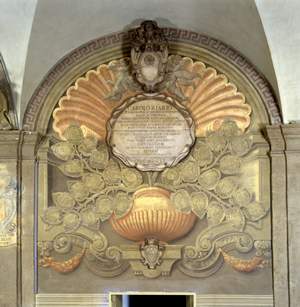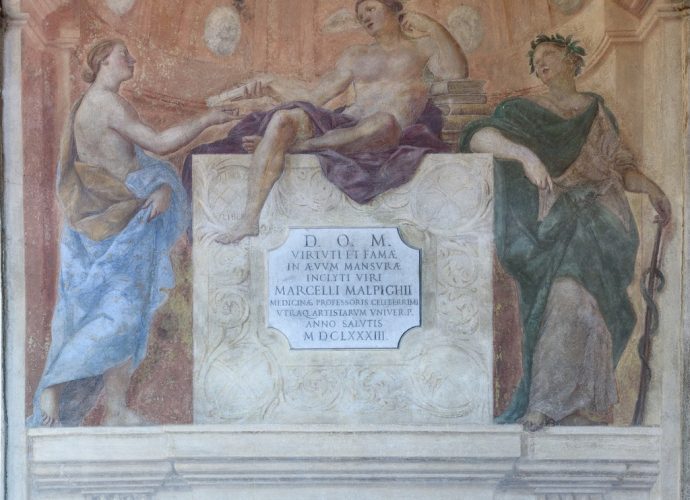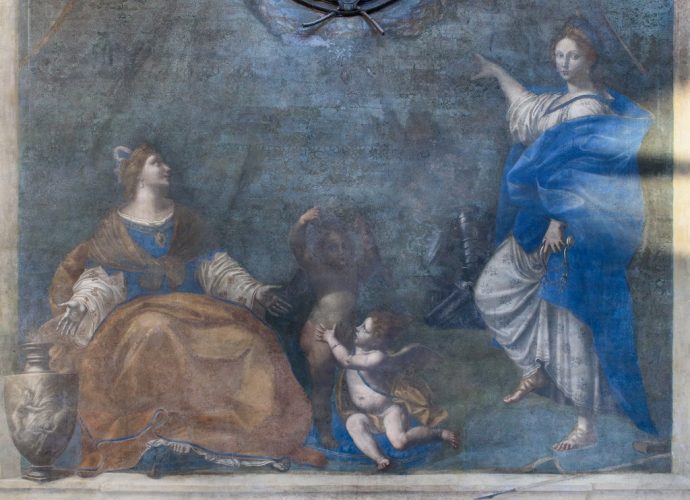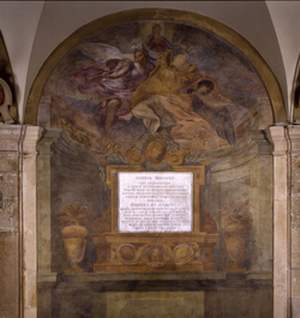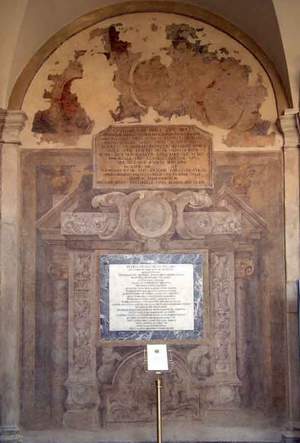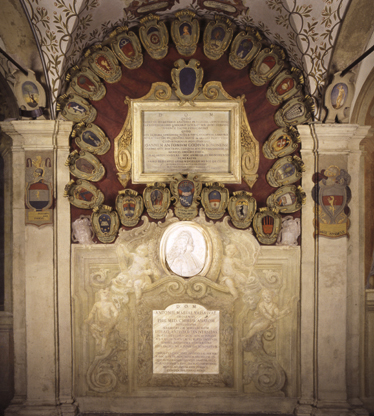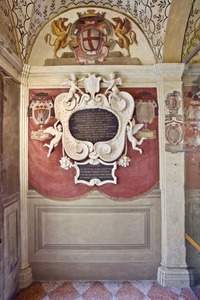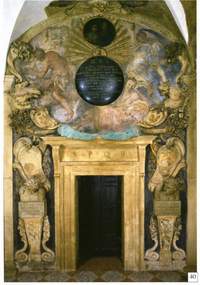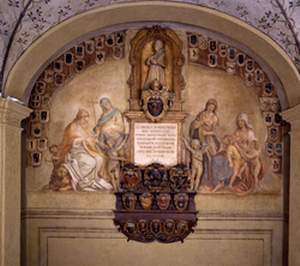The monument in honour of the physician and philosopher Carlo Riario
The inscription of 1660 dedicated to the philosopher and physician Carlo Bolognese (died in 1671) is located under the coat of arms of the Riario’s family, against the background of a large shell decoration. Below, lush branches emerge from a vase. On the leaves of the branches are represented theRead More →
